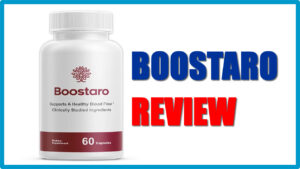
In a world where convenience reigns supreme and instant fixes are just a prescription away, America’s relationship with prescription drugs has never been more complicated. The allure of a quick solution to our medical woes beckons us into the pharmacy aisles, yet few of us stop to ponder the hidden costs that accompany our dependence on these medications. It’s time to peel back the layers of our prescription habits and examine the true price tag behind those little pill bottles. Ready? Let’s dive into the surprising costs that come with America’s prescription drug habit!
Unlocking the Price Tag: What’s Really Behind Our Prescriptions?
The first thing to consider when examining the cost of prescription drugs in America is the pricing structure. Unlike many other countries, the U.S. does not have a universal healthcare system that negotiates prices on behalf of its citizens. This results in a diverse landscape where pharmaceutical companies can set prices at will. The costs of research and development, marketing, and regulatory compliance play a significant role in the final price tag. It’s no wonder that consumers often find themselves shelling out hefty sums at the pharmacy counter!
Moreover, many patients are unaware that their insurance plans often feature complex tiered pricing models. This means that a seemingly harmless prescription could come with unforeseen out-of-pocket costs depending on the tier it falls under. If you thought you were merely paying for the medication, think again! Co-pays, deductibles, and drug formularies are all part of the financial labyrinth that can leave patients feeling lost and burdened by their choices.
Then there’s the impact of direct-to-consumer advertising, which is a unique feature of the U.S. healthcare landscape. With flashy commercials and enticing slogans, pharmaceutical companies entice consumers to request specific medications from their doctors, often without fully understanding the costs or side effects involved. This marketing strategy creates a culture of over-prescription, leading to an increase in demand that can further inflate prices. Ultimately, the combination of these factors contributes to a prescription drug market that is not only expensive but riddled with hidden fees and costs that can surprise even the most diligent budgeters.
Beyond the Pharmacy: The Surprising Costs of Drug Dependence!
While the financial burden of prescription drugs is significant, the costs extend far beyond what we see on our receipts. Dependency on prescription medications can lead to a range of health complications that may necessitate additional treatments or medications. For instance, long-term use of certain drugs can result in side effects that are as troubling as the original condition they were meant to treat. This cycle of medication can transform a minor ailment into a multi-faceted health concern, prompting a costly path of ongoing treatments and consultations.
In addition to the physical health ramifications, there are emotional and psychological costs of drug dependence that often go unnoticed. Many patients may experience feelings of anxiety or depression related to their reliance on medications. The stigma surrounding chronic health conditions and the accompanying drug use can lead to feelings of isolation, further complicating one’s mental well-being. Engaging with the healthcare system repeatedly for prescriptions and check-ups can also take a toll on one’s time and energy, impacting personal and professional lives.
Finally, there’s the ripple effect of drug dependence on society as a whole. High prescription costs contribute to rising healthcare premiums, impacting everyone, from employers to taxpayers. The burden falls disproportionately on those who are already economically disadvantaged, creating a cycle of healthcare inequity. With rising healthcare costs, hospital visits often become a necessary evil, as individuals seek immediate relief from symptoms instead of tackling underlying health issues, leading to a healthcare system that prioritizes reactive care over preventive measures.
As we navigate the complex world of prescription drugs in America, it’s essential to remain mindful of the hidden costs that accompany our reliance on these medications. From the initial price tags at the pharmacy to the long-term implications for our health and society, the financial and emotional toll is often more significant than we anticipate. By fostering awareness and advocating for change, we can work towards a healthier relationship with prescription drugs and a more equitable healthcare landscape. So the next time you reach for that pill bottle, take a moment to consider the bigger picture—it’s not just about the medicine; it’s about the journey to wellness!



